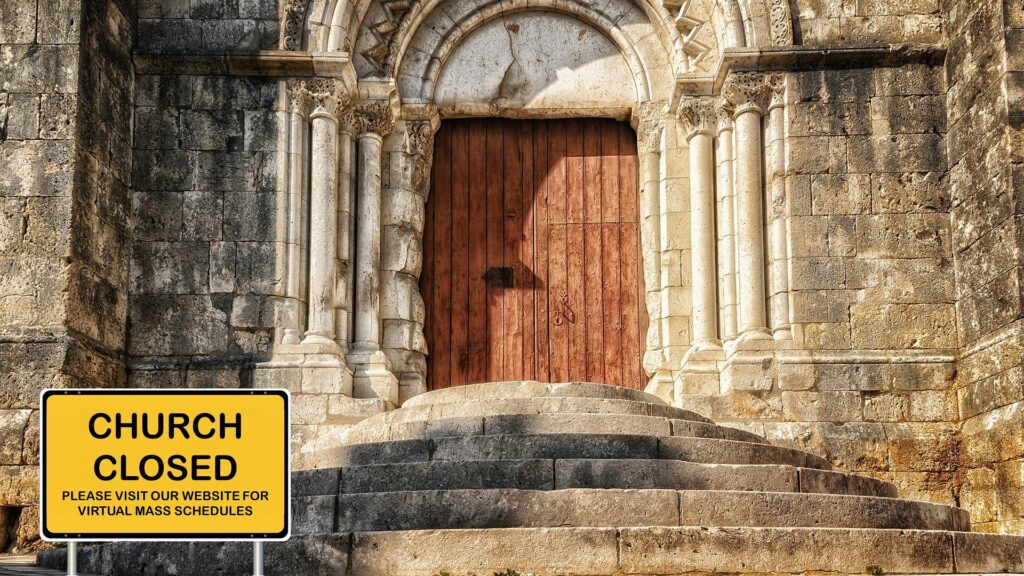In an article specially written for BRF, Professor Leslie Francis offers a lively, thought-provoking series of questions that confront us all in the wake of the coronavirus crisis.
What do these stones mean?
Joshua said to the Israelites, ‘When your children ask you in time to come, “What do these stones mean?” then you shall let them know.’
Joshua 4:6–7
So what shall we say to our children about those stones that built the churches and cathedrals that stood empty and locked-up throughout the Covid-19 great lockdown?
Iconic significance
Shall we start by pointing to the iconic significance of those buildings, built by people of faith to give enduring expression of their faith? Shall we speak in the past tense of generations of people who used to believe that those stones speak aloud of God?
Or shall we believe that such faith is still sustainable in the post-pandemic world? Shall we see such buildings as having in themselves power both to sustain and to rekindle faith?
Open doors?
Shall we draw the distinction between those churches and cathedrals that stand with unlocked and open doors inviting all to cross the threshold, and those churches for which the members hold the key?
Or has the great lock-up ended forever that attractive vision of open doors and generous hospitality?
Sacred spaces
Shall we discuss the carefully constructed sacred space situated on the common ground of churches and cathedrals? Shall we speak of the open door towards the back of the nave where the font stands to welcome new entrants (infants, young people and adults) to the family of the baptised? Shall we speak of the altar where the priest presides over the ministry of the sacrament? Shall we speak of the lectern and the pulpit from which the ministry of the word is proclaimed? Shall we let these stones speak of the rhythm of the church’s year?
Or has the great lock-up taught us that we prefer the archbishop to preside from his kitchen table and the dean to lead the daily offices from the deanery garden, with the flowing fountain and the disappearing cat?
Steeped in prayer
Shall we explain how these churches and cathedrals are the natural habitat from which the clergy conduct their professional work? Shall we explain that here is stored the holy water for baptism, the sacred vessels for the eucharistic feast, the white robes of joy to embrace the bride and groom, and the purple pall to stand in solidarity among those who mourn? Shall we explain that the clergy come here to say their daily prayers precisely where their predecessors prayed? Shall we imagine the very stones to be steeped in the prayers of the ages?
Or has the great lock-up taught us that such continuity with the past is broken now for good?

Has the great lock-up domesticated the faith?
Social capital
Shall we explain how within these sacred walls lives are changed, the quality of life improved and the quality of society enhanced? Shall we let these stones speak of the ways in which within these walls bonding social capital is accrued to build the mental well-being and resilience of participants? Shall we let these stones speak of the ways in which such bonding social capital overflows into bridging social capital as the participants go out through the open doors to feed the hungry at food banks and to campaign for social justice and for social inclusion?
Or has the great lock-up privatised the faith and domesticated it within painful isolation?
What do you think?
In order to discover how people today are providing answers to these profound questions, I have designed an online survey, ‘Coronavirus, church and you’.
So far around 7,000 clergy and lay people have responded. The survey is open and active until the end of June. Do please take part and invite others to do so as well.
Read Professor Francis’ follow-up article to this post, reflecting on the survey’s findings.
Pray with us
Martyn Payne has written this prayer in the Celtic tradition
Keeper of my steps,
Keeper of my senses,
Keeper of my soul,
Keep me as the apple of your eye;
Keep me in your perfect peace;
Keep me in my coming in and my going out;
For you are the strong Keep
Within the walls of my life.
Amen

Revd Canon Professor Leslie J Francis is professor of religions and psychology at the University of Warwick. He researches and publishes in the fields of biblical hermeneutics and empirical theology. He serves as canon theologian at Liverpool Cathedral and as honorary director of the St Mary’s Centre, a Christian research centre rooted in Wales.
Photo © Emyr Parri
So what should we say?
Professor Francis suggests we invite children – or at least the younger ones – to join Teddy Horsley on his visit to St Tysilio’s Church to discover what he finds there and why he likes going there so much.
Or perhaps invite them to join Teddy Horsley’s visit to Bangor Cathedral to listen to how these stones speak of the Christian faith?
Messy Church at the threshold
Messy Church pioneer Lucy Moore, in a recent video, asks important questions about the future shape of church – particularly Messy Church – as we move out of lockdown and into the uncertainty and blurred boundaries of the medium term (see from 20:50).
Watch the video or visit the Messy Church website to tell us what you think.

